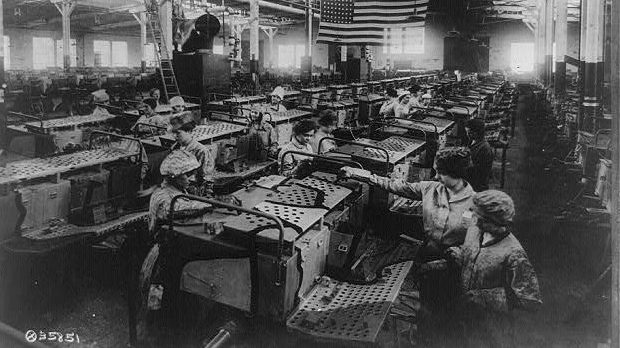Michigan’s Role in the Rise of the Middle Class
Michigan’s Middle Class “was really without precedent in history,” says MSU economist Charles Ballard.

A Detroit Factory circa 1914-1918. Photo credit: Library of Congress.
Southeast Michigan is, in many ways, the birthplace of the American Middle Class. Since the early 20th Century, the region has played a central role in American manufacturing and the health of middle-income Americans’ economic status.
What were the economic conditions that allowed the Middle Class as we know it to emerge and stick around for decades? And what does Michigan’s economy now say about the future of the Middle Class?
“People with modest skills… being able to earn their way to a standard of living that we would now consider Middle Class, where they could own their own home, own their own car, that was really without precedent in history,” says Michigan State University economist Charles Ballard.
“And it became quite common in Michigan, especially southeast lower Michigan.”
Ballard says progressive public policies through the middle part of the 20th Century helped give the Middle Class enough inertia to stick around for decades.
But he says there has been a shift away from policies that help sustain the Middle Class in recent years.
“The rich got organized,” he says. “Many of our policies have tilted strongly toward the top one percent, with predictable consequences.”
Ballard says more support for education, progressive taxation, more financial services regulations, could help support the middle class going forward. But he says there’s no guarantee at this point that the Middle Class will ever be what it once was.
Click on the audio player above to hear the full conversation.

